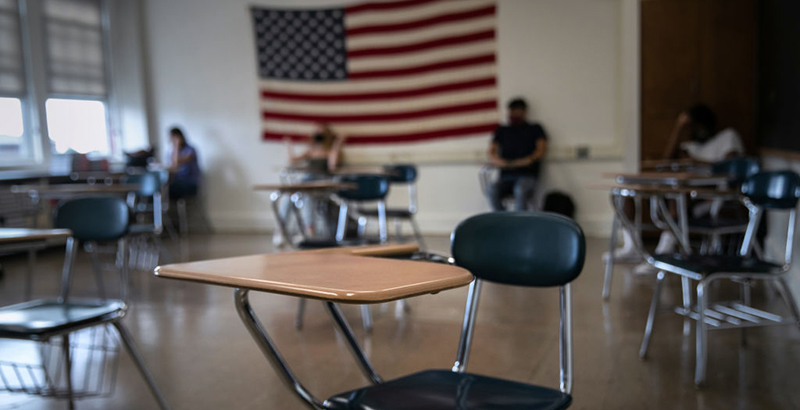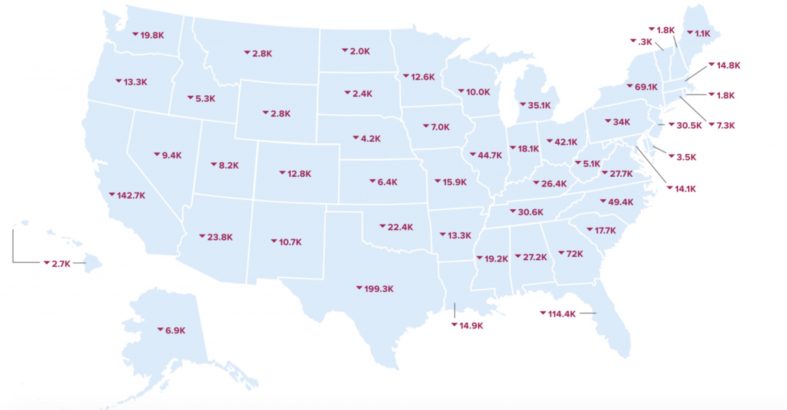Report Estimates 1 to 3 Million Students Missing From School Since March, But Data on Disrupted Learning is ‘At Best a Moving Target’

Between 1 to 3 million students in the U.S. possibly haven’t attended school since pandemic-related closures began in March, according to estimates released today by Bellwether Education Partners.
Pulling from news reports and federal data sources, the team of researchers predict that between 10 and 25 percent of students in the most marginalized populations have completely missed out on learning for the past seven months.
“We did this because we know that just 1 percent of our most marginalized kids not coming to school might not seem like a lot in any one district, and many districts might not even be keeping careful count, but that’s more than 230 schools’ worth of children across the country — and we think that’s a big deal,” said Hailly T.N. Korman, a senior associate partner at the Washington-based non-profit who conducted the project with co-authors Bonnie O’Keefe and Matt Repka.
The five high-risk groups that have likely had the most difficulty connecting to school virtually are homeless students, children with disabilities, migrant students, English learners and those in foster care. If 10 percent were disconnected from school, for example, the number of students in those groups would range from 1,500 in Vermont to over 200,000 in California — the size of a large metro school district. If a quarter of students in those groups haven’t participated since March, that would amount to over 3 million nationwide.
“There is not enough public recognition of the serious challenges facing America’s most vulnerable students at this moment or of the consequences if millions continue to be disconnected from schools and other support systems indefinitely,” they wrote.
But they stressed that the estimates are far from perfect because many students fall into two or more groups and “these populations are at best a moving target.”
The researchers considered two types of students in their model — missing students that haven’t logged on but would participate if they had the opportunity and those who are gone, which they defined as having “made a transition away from school engagement in ways that could be permanent.”
Korman, with Bellwether, noted that the researchers did not use districts’ actual enrollment counts so far from this year.
“Since accurate attendance data is hard to come by this year, and we know that many districts are still struggling to define what ‘in attendance’ even means,” she said, “we decided to focus on a set of hypotheticals that we think align with the reporting to date and the pockets of local data where it has been made available.”
A range of 1 to 3 million missing students doesn’t seem off to Jamie Fox, the head of communications for Remind, a communications platform widely used among schools. The company calculated that 1.3 million students stopped engaging — sending or responding to Remind messages — by the end of last school year.
“We’ve been trying to use our data to help administrators gain [a] line of sight to ‘missing students’ so they can plan interventions early,” Fox said.

Beyond government officials’ efforts to “stomp out” the virus so schools can reopen, the Bellwether authors recommended that education officials develop attendance strategies that recognize students’ unmet needs, work with social services and internet providers to coordinate responses, and collect and report real-time attendance data.
Hard to ‘keep track’
Missing students include those experiencing homelessness who already struggled to find reliable internet service or suitable places to do schoolwork even before COVID-19. A new report this week on rising youth homelessness in California, from UCLA’s Center for the Transformation of Schools, delved into the struggles facing these students.
“COVID has exacerbated those challenges since many students are still not going into a physical school location, making it hard to ‘keep track’ of their living situations, needs, and well-being,” said Geneva Sum, a communications specialist for the center. “Several of our interviewees stated that students are trying to do schoolwork in motel rooms with multiple family members and are experiencing difficulty concentrating, so some districts are distributing things like microphones and headphones to mitigate those issues.”
The Greenville County Schools in South Carolina is among those districts using the types of strategies the researchers recommend. To minimize the chances teachers would lose touch with students in the spring, the technology services department sent frequent reports to schools identifying which students weren’t logging on to their classes, according to district spokesman Tim Waller.
If teachers couldn’t make contact, the district’s attendance director and social workers would get involved. Ultimately, the district lost contact with 54 of the district’s 77,000 students.
Prior to the start of this school year, the Fulton County Schools in Georgia mounted a “locate, assess, connect” effort led by social workers at each school. They reached out to almost 7,500 students who missed more than 10 days last spring and completed less than 70 percent of their online assignments in March through May.
With a script and a list of questions for families, they asked about needs, including technology, housing and food.
“We strongly believe that this proactive, structured process was a key component of why we had so many students ready to go on day one in a full-time virtual environment,” said spokeswoman Shumuriel Ratliff.
Disclosure: Andy Rotherham co-founded Bellwether Education Partners. He sits on The 74’s board of directors.
Get stories like these delivered straight to your inbox. Sign up for The 74 Newsletter

;)
